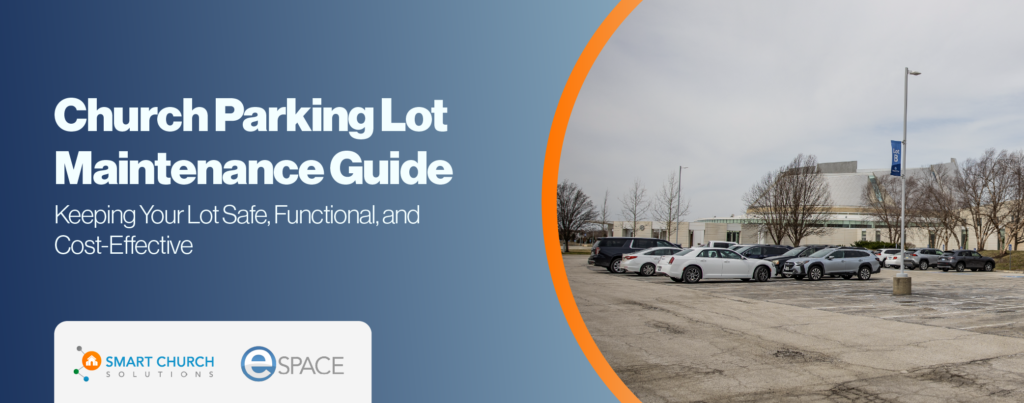Regularly walking through your facility with the intent of spotting new issues plays a critical role in effective facility management. This process not only helps in maintaining the physical space but also significantly influences the perception of first-time guests. The appearance of the exterior and interior of your building can reflect on the overall care and management of the church facility, affecting how newcomers feel about the community.
Starting from the Outside
Begin your inspection at the perimeter of your property:
- Assess the Property Line: Check for any signs of deterioration or unauthorized activities. The state of your property line can offer insights into security or maintenance issues that need immediate attention.
- Examine the Parking Lot: Look for signs of misuse or damage, such as tire marks or potholes, which could pose safety risks or deter guests.
- Evaluate Landscaping: Ensure that the landscaping is well-maintained. Overgrown or littered areas can negatively impact the aesthetic appeal of your church campus.
Smart Tool: Periodic Site Assessment
To help you get started, we developed a Period Site Assessment (i.e., walkabout) checklist. This simple tool is not exhaustive. It should be customized for your specific facility and context. Now, go get to walking-about!
Moving Indoors
Once the external review is complete, move inside the building to continue the inspection:
- Check High Traffic Areas: Examine entrances, hallways, and common areas where wear and tear are most prevalent. These areas should be inviting and well-maintained to make a good first impression.
- Inspect Restrooms: Assess the cleanliness and odor of the restrooms. These areas are often overlooked but critically important in demonstrating the church’s desire for excellence.
- Alternative Routes: Walk through less frequently used paths like back stairwells and emergency exits to ensure they are not obstructed and are readily available for their intended use.
Engaging Others in the Facility Inspection Process
Involve various church members and staff in the inspection process to gain different perspectives:
- Team Walkthroughs: Organize regular walkthroughs with your building and grounds team. Incorporating different viewpoints can help identify issues that one person might miss.
- External Audits: Consider inviting facility professionals from outside your organization to provide an unbiased assessment of your church facility’s condition. Get more info on our facility condition assessments.
Documentation and Tracking
To effectively track issues and improvements:
- Use Visual Documentation: Take photographs of any issues you encounter. Photos provide a clear, immediate reference to the problems and serve as documentation over time.
- Digital Tools: Utilize facility management software, like eSPACE, to organize and prioritize repair tasks. This technology can help streamline maintenance efforts and ensure nothing is overlooked.
Continuous Improvement of Your Facility
Review and adjust your inspection strategy regularly:
- Set a Regular Schedule: Conduct these inspections monthly or in alignment with significant seasonal changes to ensure consistent upkeep.
- Act on Feedback: Use the insights gained from inspections to make informed decisions about maintenance priorities and improvements.
The Bottom Line
Regular “Fresh Eyes” walks are essential for proactive facility management. By systematically inspecting your church facility, documenting issues, and engaging others in the maintenance process, you can ensure that your church remains a safe, welcoming place for worship and community events. Remember, the goal is not just to fix problems but to prevent them by maintaining high standards of care and attention throughout your facility.








